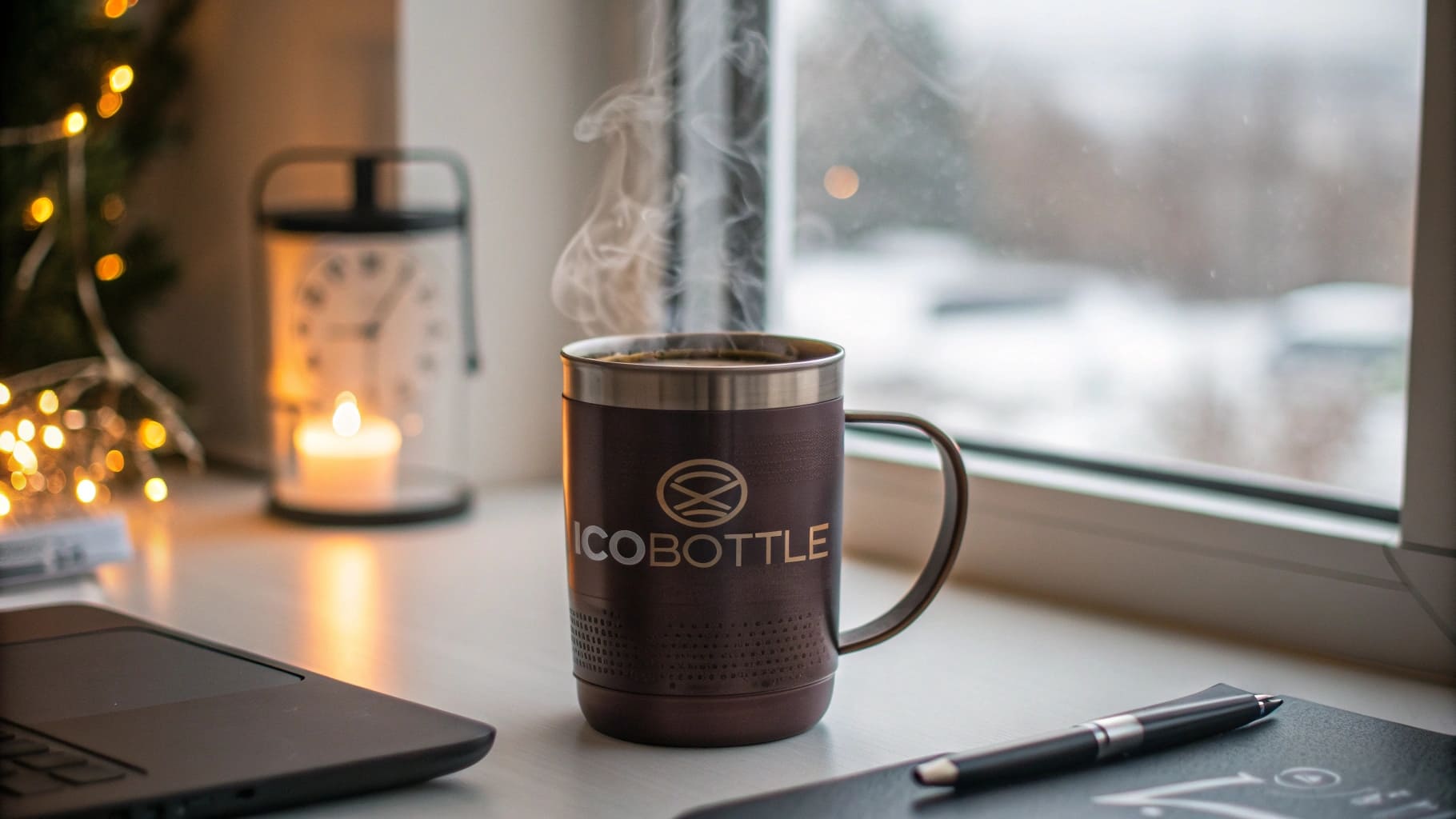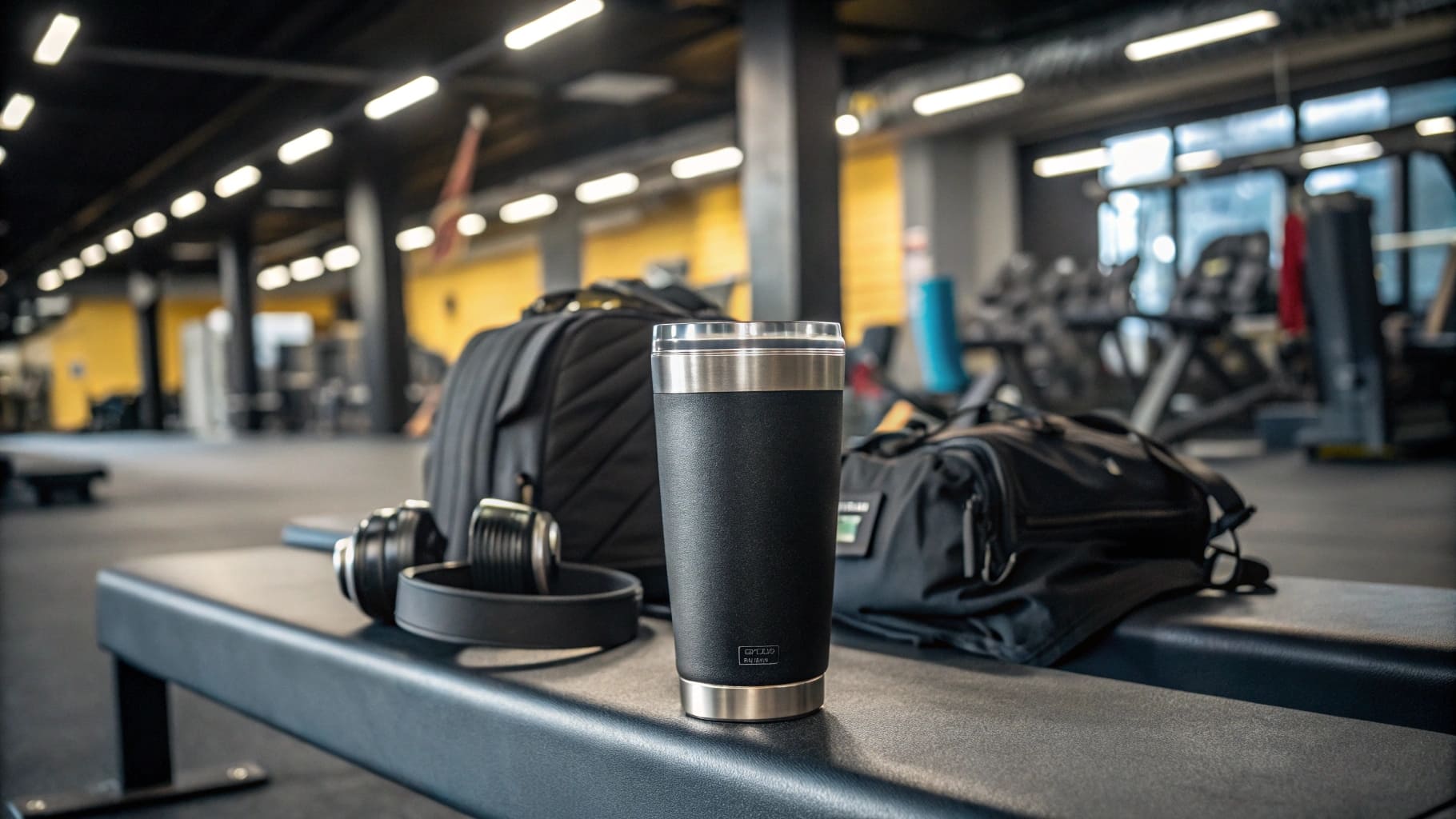Struggling to find the top tumblers for your 2025 inventory? The market is crowded, making choices hard. I'll guide you to what truly matters for B2B success.
For 2025, the best tumbler isn't just a brand name. It's about finding a manufacturing partner who delivers superior material quality, proven safety standards, and innovative, durable finishes. This ensures your business gets top value and reliability.

You might be thinking about specific brands you see in stores. But for your business, the real story is different. We need to look deeper than just a label. Let's explore what sets a truly great B2B tumbler supplier apart. Understanding these details will make all the difference to your bottom line and customer satisfaction.
So, what really is the best "brand" for tumblers when you're buying wholesale?
Confused about which tumbler "brand" to trust for bulk orders? Many names exist, but few offer true B2B value. Let's clarify the best approach for your business.
For B2B buyers like you, the "best brand" isn't a retail giant. It's the manufacturing partner who consistently provides quality, innovation, and customization. Focus on the supplier's capabilities, not just a consumer-facing name.

When we talk about the "best brand" in a B2B context, we are not usually discussing the names you see on store shelves. This is especially true for someone like Mark Shenng in Canada, who sources products from China. Mark, you are smart. You know that behind those retail brands is often a skilled manufacturer. For your business, the "best brand" is actually your supplier. This change in thinking is very important.
Why Supplier Capability Matters More Than Retail Fame
Think about it. Your profit model involves rebranding products. So, you need a partner who can deliver specific things.
- Consistent Quality: The products must meet your high standards every single time. You cannot afford variations that disappoint your customers.
- Customization Options: You need choices for logos, colors, and maybe even unique design adjustments. A good supplier can work with you on these.
- Reliability in Production: On-time delivery and consistent product specifications are key. Delays can lead to missed sales seasons, as you know, Mark.
I remember a client I worked with a few years ago. Let's call him David. He initially insisted on sourcing tumblers that looked exactly like a famous retail brand. He spent months trying to find a manufacturer who could make an exact copy. The big challenge was that his focus was only on the look. He wasn't thinking enough about the underlying quality and the manufacturing process. We eventually shifted his focus. I helped him find a supplier known for excellent material sourcing and very good finishing techniques. This supplier's own "brand" was not globally recognized by consumers. But the result was much better. David got higher quality products for his brand. There were fewer defects. And, in the end, his customers were happier. For 2025, finding this kind of manufacturing partner is what truly defines the "best brand" for your import business. It is about the source of the product, not just the label you see in a shop.
How can you be sure your tumblers are genuinely lead-free?
Worried about lead in your tumblers? This hidden danger can ruin your reputation and business. I'll show you how to ensure your products are safe and compliant.
"Lead-free" isn't tied to specific retail brands for B2B. It’s about your manufacturing partner’s commitment to safety. Demand verifiable test reports (FDA, LFGB, Prop 65) for all components to guarantee lead-free products.

The question "What brands are lead-free tumblers?" needs a small change for B2B buyers. It is not about which retail brand advertises "lead-free." For you, Mark, as an importer and company owner, the important point is ensuring your chosen manufacturing supplier produces lead-free1 items. "Lead-free" must be a basic requirement, not an extra feature. You understand sales, but this technical aspect of safety is vital.
Verifying Lead-Free Claims: Your Responsibility
You cannot just take a supplier's word for it. This is too important. Here is what you need to look for:
- Material Specification: Make sure they use high-quality stainless steel, like 304 grade. Some suppliers might even offer 316 grade for better corrosion resistance.
- Component Checks: Lead can sometimes be found in solder points. These points are used to seal the vacuum insulation in tumblers. Lead can also be in certain pigments used for coatings. Your supplier must have strong controls to prevent this.
- Testing and Certification: This is extremely important. You must ask for and carefully verify third-party testing reports2. Do not just accept any document. Check its authenticity.
| Certification/Standard | Its Relevance for Tumblers | What You Need to Look For on Reports |
|---|---|---|
| FDA (USA) | Regulates food contact safety in the United States. | Confirmation of compliance for materials and coatings. |
| LFGB (Europe) | German food contact safety standard, often stricter. | Proof of compliance if you sell in European markets. |
| Prop 65 (California) | Requires warnings about exposure to harmful chemicals, including lead. | Evidence that shows no lead content, avoiding warning labels. |
I recall a situation. A new procurement officer, much like you, Mark, almost placed a very large order. He based his decision on a supplier's verbal promise of "lead-free." Luckily, our team pushed for certifications before finalizing the deal. The first reports they sent were incomplete. After some more questions and requests, it turned out their solder points had not been consistently tested for lead. This story shows why verifiable proof is so important. For 2025, "lead-free" is a basic expectation. Robust verification from your supplier is key to protecting your business, your brand’s reputation, and your customers. This is a core part of your quality inspection focus, just like checking for shipment delays.
When it comes to tumbler finishes, what's the best "epoxy" or coating for durability and safety?
Choosing tumbler finishes can be tricky. You want durable, safe, and attractive options for your customers. Let's look at what B2B buyers should prioritize for factory-applied coatings.
For B2B, the "best epoxy" isn't a DIY craft brand. It's about the quality, durability, and safety of factory-applied finishes like powder coating. Prioritize food-safe, chip-resistant options that meet your branding needs.

When you ask, "What is the best epoxy brand for tumblers?", we need to adjust the meaning for a B2B operation like yours, Mark. We are not talking about the epoxy resins that people buy in craft stores for DIY projects. Your main concern is the industrial-scale, factory-applied finishes that your supplier uses. The quality of this finish directly impacts your product's appeal, its durability, and very importantly, its safety.
Key Considerations for Factory Finishes in 2025:
Instead of looking for a specific "brand" of epoxy, you should focus on these features of the finishing technology itself and your supplier's capability to apply it well:
-
Durability and Resistance:
- Powder Coating: This is still a very popular and reliable choice. It is known for its toughness. It resists chipping well. It also comes in a wide range of color options. As someone sensitive to quality, Mark, this is a good starting point.
- Advanced Coatings: Keep an eye out for suppliers who are investing in newer coating technologies. These might offer even better scratch resistance or unique textures that can make your product stand out.
-
Safety and Compliance:
- Food-Grade Compliance: This is a basic requirement. All coatings and any printing inks used on the tumblers must be food-safe. They must meet standards like FDA or LFGB, depending on your main export countries like America and Europe.
- VOC-Free Options: More and more brands are becoming environmentally conscious. They prefer finishes with low or no Volatile Organic Compounds (VOCs). Ask your supplier about these options.
-
Customization and Aesthetics for Your Brand:
- Color Matching: Can the supplier accurately match your specific brand colors? For example, can they work with Pantone matching systems? This is important for your rebranding efforts.
- Printing Technologies: Think beyond just solid colors. Consider options like UV printing for detailed logos, laser etching for a premium feel, or even innovative water transfer printing for complex patterns. The "best" finish will allow for high-quality, precise application of your logo and overall design.
- Eco-Friendliness of the Process: As sustainability becomes a bigger selling point, ask about eco-friendly coating options. Also, ask about manufacturing processes that minimize environmental impact.
I remember working with a startup boss. He wanted a very specific matte finish for his tumblers. He also wanted a unique texture. We did not search for an "epoxy brand." Instead, we looked at different suppliers. We evaluated them based on their powder coating3 lines. We also checked their ability to experiment with application techniques to get the effect he wanted. The supplier who showed real skill over their process and material selection delivered the "best" finish. For 2025, the "best" finish is one that is durable and safe. It must also align with your brand. And it must be applied with expertise by your manufacturing partner in China or Vietnam.
Conclusion
To find the best 2025 tumblers, focus on suppliers with material integrity, verified safety, and quality finishes. This approach ensures B2B success, not just relying on retail brand names.
-
Explore this resource to understand the essential practices for ensuring your products are genuinely lead-free, protecting your brand and customers. ↩
-
This link will guide you on how to effectively verify third-party testing reports, ensuring compliance and safety for your products. ↩
-
Learn about the advantages of powder coating, a popular choice for tumbler finishes, ensuring toughness and a variety of colors. ↩

